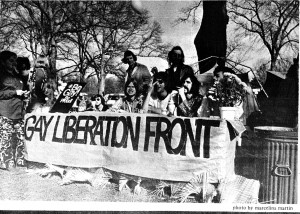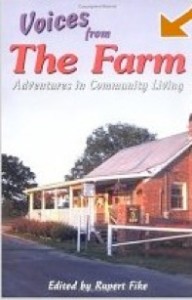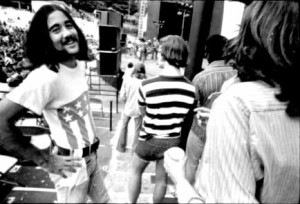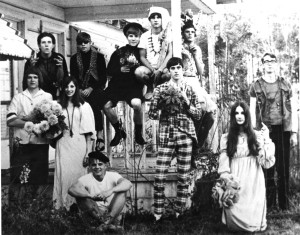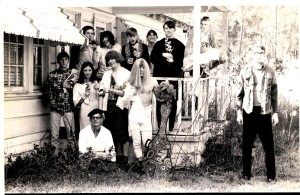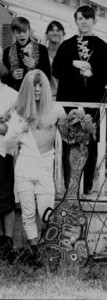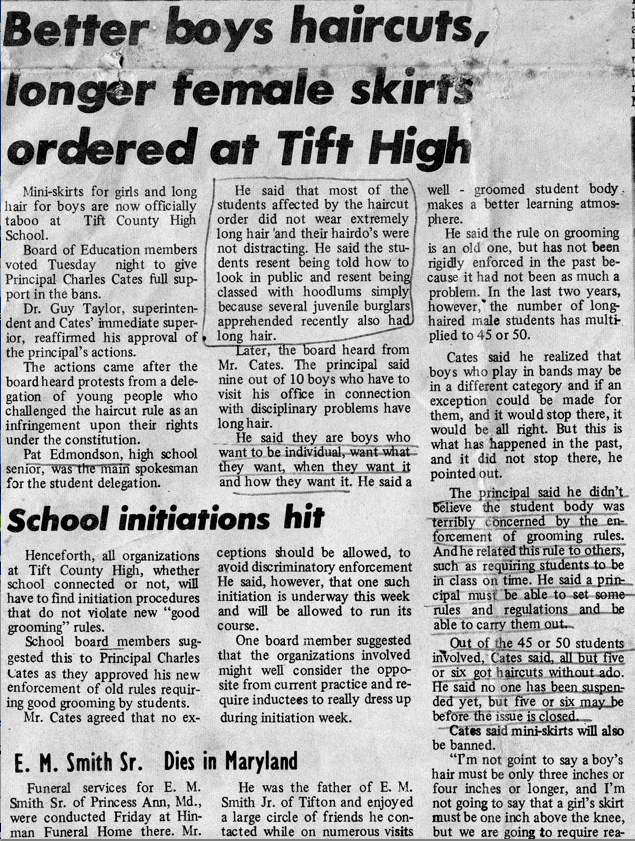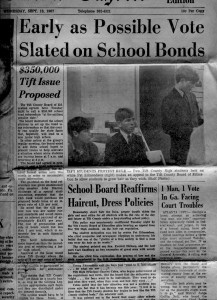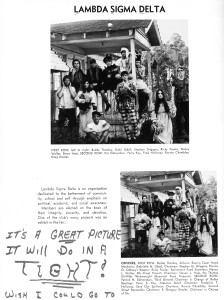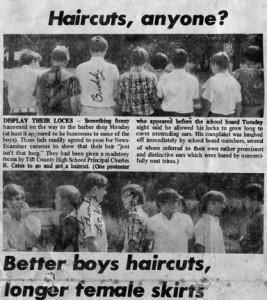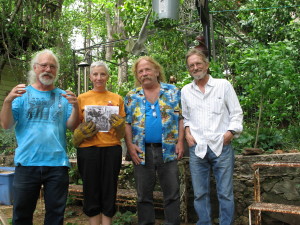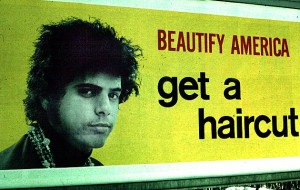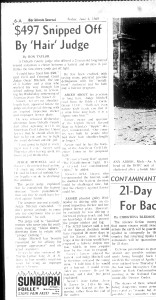By JP Burns (JP) =================
The scene opens in a dimly lit, smoky coffeehouse, populated by pale, gaunt figures in black turtlenecks, goatee’s, and berets. The sound of bongo drums droning in the background, keeping the beat as the lone figure on stage hisses a poem of revolution and woe.
“You’re one cool cat, daddy-o.” Maynard Krebs would have said.
This is the scene many of us think of when we hear the word beatnik or bohemian, or when we refer to coffeehouse poetry. These are the prominent images of the beatnik stereotype, however, as it seems to be with all stereotypes, the image is incorrect, and the generation that gave birth to this stereotype is sadly misunderstood. To understand the reality of the counter-culture we must first try to define it and identify its progenitors, a task, which is often difficult when speaking of social movements.
There has always been a group of people with little interest in the trappings of accepted society; those who have no interest in keeping up with the Jones’s, climbing the corporate ladder, or generally participating in ‘the rat race’. A group whose disillusionment with contemporary society has set them apart in some fashion: the bohemian lifestyle so to speak.
What is bohemian exactly? I’m not sure anyone can adequately define it although one can trace the use of the term back to the gypsies who were believed to have originated from a country called ‘Bohemia’. The term itself has taken on the connotation of a lifestyle of hedonism, non-conformity, and the literary/artistic avant-garde. While discussing the essence of the bohemian lifestyle Robert Duncan wrote: “In a Bohemian household you have immediacy to all the arts so that you are going to have some aspect of music, poetry, painting, and also the decoration of things at the same level.” That access to the arts in all their forms coupled with the resistance to the norms of society provides the essence of the counter-culture lifestyle.
The Beat Generation is a bit easier to define, in spite of its maligned stereotype. The term ‘Beat’ was coined by Poet/Author Jack Kerouac in 1948 during a conversation with novelist John Clellon Holmes, it was meant to describe himself and his friends (Allen Ginsberg, Neal Cassady, William S. Burroughs, Gary Snyder, Lawrence Ferlinghetti, Gregory Corso and Michael McClure); a group of post World War II intellectuals who could not fit into the expected roles of society: corporate robots, or ‘spit and polish’ soldiers.
The phrase ‘Beat Generation’ was meant to echo Ernest Hemingway’s description of his own crowd as the ‘Lost Generation’.
He used the term ‘beat’ in much the same fashion that it is commonly used today, as in the terms “beaten down”, or “I’m totally beat”. The connection here is one of disappointment, defeat, disillusionment, and resignation. The phrase ‘Beat Generation’ was meant to echo Ernest Hemingway’s description of his own crowd (which came of age during the First World War), as the ‘Lost Generation’.
Jack Kerouac expanded his ‘definition’ of the Beat Generation to include a second meaning: ‘beatific’ or sacred and holy. Kerouac explained that by describing his generation as beat he was trying to capture the secret holiness of the downtrodden. He reflected this idea of holiness when writing of ‘the saintly hobos’ in ‘On the Road’, published in September 1957.
In her paper “The Beat Generation,” Amanda Erickson described the ‘Beat Generation’:
“The Beat Generation was born out of post-war disillusionment and restlessness. They were a generation of young people struggling to come to terms with the chaos and uncertainties that were a part of their upbringing. Their movement, if it can accurately be called that, manifested itself in literature and poetry, which threw off the traditional, classical format to become a character in and of itself. The Beats attempted to express themselves in a way that was extremely personal and extremely in-your-face. They addressed issues that were taboo at the time, most notably homosexuality and drug use, writing largely for and to each other, sharing life experiences and crying out against an establishment that harbored little space for individuality and protest.”
In 1958, after the Beat ‘movement’ had influenced multitudes of alienated young men and women to migrate to the North Beach area of San Francisco, Herb Caen wrote a column for the San Francisco Chronicle in which he coined the term ‘Beatnik’. While there is speculation on the original meaning of ‘nik’, Caen insists that it was actually borrowed from the satellite ‘Sputnik, (meaning traveling companion)’ which had just been launched by the Soviet Union, striking fear into the hearts of many Communist-fearing Americans. On April 2, 1958, Caen wrote:
“Look magazine, preparing a picture spread on S.F.’s Beat Generation (oh, no, not AGAIN!), hosted a party in a North Beach house for 50 Beatniks, and by the time word got around the sour grapevine, over 250 bearded cats and kits were on hand, slopping up Mike Cowles’ free booze. They’re only Beat, y’know, when it comes to work.”
Caen’s article not only gave the Beats an unwanted name, it also gave them an unwanted stereotype; one-room pads, sandals, goatee’s, bongo’s and berets… it wasn’t too long after that when the first Beat Generation exploitation movies and TV beatniks came out. Soon, every teenager wanted to be a beatnik.
[Under influences from the Civil Rights Movement, I believe,] The Beat coffehouses began to feature folk music, which started the Folk Movement. Then Bob Dylan fell under Beatle influence and changed it to Folk Rock. Folkies starting to rock created what we think of as sixties bands; and the Beat goes on..
